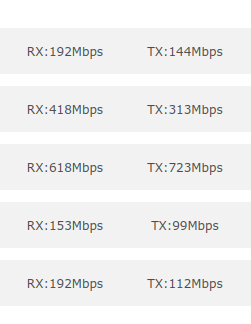I currently own three TP-Link WPA8631P PowerLine AV1300/WiFi modules, along with three TL-PA8010P plain AV1300 PowerLine units and a TP-Link ADSL/WiFi router (VR600). I have a gigabit switch for my wired Ethernet servers, workstations and other bits, but my house is quite spread out with an office at either end. I have various bits plugged into the AV1300 TL-PA8010P PowerLine network. I also run file servers, media servers, and a DHCP/DNS server, along with connections going to my Air Source Heat Pump & Solar inverter.
At the moment, I have all of my TP-Link WiFi kit running as a TP-Link OneMesh, which is really unstable. It's running both 2.4 & 5Ghz on the same SSID, with WPA2 WPA2-PSK and AES Encryption.
We live in a fairly rural location, with flaky internet. At some point next year we are supposed to be getting 100Mb full fiber. As it will never be faster than 250Mb, let alone 500Mb, I'm going to do the Raspberry Pi OpenWRT router thing - giving me a independent, stand alone gateway router that doesn't participate in the WiFi.
As the WPA8631P modules are now fully supported for running OpenWRT & using AV1300 as a backhaul, my plan is to reflash all three to OpenWRT and retire the WiFi on the ADSL/WiFi router - I'll just keep it as my ADSL gateway until I can obsolete it completely if/when they connect the fiber. Yes, I'm not planning on touching the TL-PA8010P AV1300 units, as they can just stay as they are. I also know that my VR600 isn't compatible with OpenWRT - I'll replace it when I can, with something that is.
So... the question is: what is my best approach to running the three TP-Link WPA8631P units as a WiFi Mesh, using their AV1300 PowerLine capabilities as a backhaul? Does it appear that I can configure an OpenWRT based Mesh to give me a stable replacement for my existing setup?
At any time I probably 10+ WiFi devices connected, quite a few of which are roaming around the building. I've gone through the OpenWRT Documentation & really think that I need some advice on how I should best approach it, given all the the choices. I think that I should just be looking at 802.11s and Mesh11sd - but I'd like someone to confirm that OLSR and batman-adv are too much for my needs?
As I currently own the three WPA8631P units, I hope that they will make a good hardware choice for my Mesh network. They cost me quite a lot to buy originally, & I just want a home mesh network that works reliably. I don't really want to buy more bits unless I have to.
